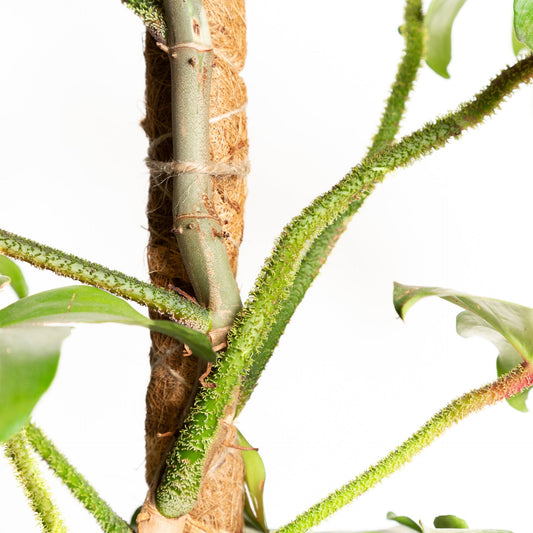Air plants, which are all of the species in the Tillandsia genus, are famous for being plants that don’t necessarily require themselves to be planted in soil! Most of them are epiphytic, which means that they usually grow on other plants, but there are also many that grow on rocks. It’s not uncommon in their natural range to spot them growing on buildings and telephone poles in the cities. “Spanish moss” is a particularly signature air plant native to the southeastern United States that many would recognize right away growing on trees around their city.
The genus Tillandsia is actually as old as a formally recognized genus can be - it was originally named by the father of Western taxonomy himself, Carl Linnaeus, who first established the system of identifying living organisms using today’s “Genus species” format. His first draft of the system has been altered heavily over the last 285 years, of course, but the genus Tillandsia itself remains unaltered.
Air plants are one of the most fun plants to own because they can go anywhere in your home. Stick a xerographica in literally any spot and it’s going to look fabulous. You can even leave them on a surface like a countertop or dining table to absolutely no detriment to the plant. Many people also choose to house them in open glassware, which of course looks fabulous. Contrary to other plants, the one thing they don’t want is to be placed on soil - especially damp soil!
Air plants are actually in the same family as bromeliads, which many people are familiar with, and they collect water and nutrients in much the same way (by growing their leaves in a way that allows water and nutrients to collect near the stem), but with one key difference: air plants have special cells in their leaves called stichomes which allow them to absorb water and nutrients directly through their leaves. These cells are the reason air plants don’t need to grow roots that collect water and nutrients from soil.
In their natural environments, air plants absorb all the water and nutrients they need without issue. However, in our homes and in places farther north than the American South, there isn’t enough of those things in the air to sustain air plants. Therefore, air plants should be soaked completely submerged for about 15 minutes once a week and sprayed down with air plant foliar fertilizer spray once a month.
One of the coolest things about air plants is also one of the least widely known things about them: they’re color-coded according to what kind of care they want! Green air plants want low or medium indirect light, and gray air plants want high indirect light or even direct sun.
When air plants die, they don’t express it in the same ways as other plants. At a glance, you probably wouldn’t even recognize that an air plant has died at all - the main difference is that the base of the stem has become crunchy, so you have to pick it up to really notice. Even then, if you don’t know what you’re looking for you might just think that it’s a naturally slightly crunchy plant (that’s how subtle it can be). As a result, many air plants purchased from places like grocery stores are already dead upon purchase. The idea that air plants don’t require any care is the reason many stores are able to get away with this! If you take an air plant home, give it a soak right away. If it falls apart, you’ll know for sure you were sold a dead plant.
If you keep up with your watering and fertilizing, your air plant will eventually bloom a large, vibrant flower. The flower of an air plant is enormous compared to the plant itself, often growing larger than the main body! After it’s done flowering, it will “pup” (grow little babies) and then the main air plant’s life cycle will be over. It’s an amazing and exciting time to own an air plant, and it’s very rewarding to have those baby plants to start over with.
If you’re looking to delve into the world of air plants, there’s no better place to start than T. xerographica. It’s big, it’s beautiful, it looks great anywhere, and since it turns green as soon as you water it, you can always tell whether or not it’s thirsty just by looking at how green it is.
Good luck on your air plant journey, and don’t forget to fertilize!




Comments (2)
QOjryUloemEFhp
kldXxzGuSo